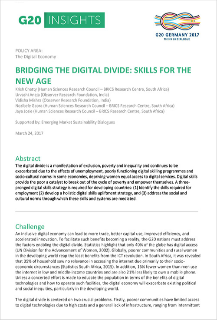In the past few days there has been a spate of attacks by the People's War Group (PWG) Naxalites on leaders belonging to the ruling Telugu Desam Party (TDP) in the southern Indian State of Andhra Pradesh. <br /> <br /> On February 8, 2004, the Member of Parliament (MP) representing Anantapur constituency in the just dissolved thirteenth Lok Sabha (Lower House of Parliament) had a miraculous escape when PWG ultras set-off five 'directional mines' near Ramagiri village. The speed of the vehicle and poor skills of the attackers saved the MP and four other important local leaders, two of whom suffered minor injuries. The modus operandi of the attack was similar to the most daring attack yet by the PWG: they had made a failed attempt, on October 1, 2003, on the life of AP Chief Minister Chandrababu Naidu, near Alipiri, on the Tirumala Hills. <br /> <br /> Besides, on February 7, 2004 another group of PWG Naxals sought to kill another TDP leader in Jammikunta, Karimnagar district. Earlier, on February 4, a village-level TDP leader of Naramalapadu, Guntur district, was shot dead by PWG rebels, who also blasted his house and razed it to the ground, even as another leader from the same village was given a sound thrashing. In another incident, on January 29, the president of Tadur mandal (administrative unit), Mahabubnagar district, was dragged out of his house and killed in cold blood. <br /> <br /> In the light of these numerous attacks, the TDP has accused the Congress and another political party, the Telengana Rashtra Samiti (TRS)--whose chief goals is establishing a separate Telengana State carved out of Andhra Pradesh--of colluding with the Naxalites and passing on information regarding the movements of its cadres and leaders in order that the Naxalites could target and kill them. The Chief Minister warned during a media interaction in the State capital Hyderabad, on February 5, having ties with Naxalites could be fatal. He said those who establish a nexus with the Naxalites for short-term gains could one day fall victim to Naxalite violence. Earlier on January 29, Naidu maintained, while speaking in Anantapur, that the Congress was hand-in-glove with the PWG Naxalites and was "conspiring to gain from the extremist issue and help them later". <br /> <br /> Adding credence to Naidu's assertions, one commentator wrote on February 7 that the PWG had clearly ordered in an internal circular to its cadres to obstruct electioneering by the TDP and its ally, the Bharatiya Janata Party (BJP), and let the Congress and other opposition parties carry out election-related work. <br /> <br /> In all, in the year 2003, 55 political leaders were killed by Naxalites in the State. Of these, 41 belonged to the TDP, nine to the BJP, four to the Congress and another independent political leader. Statistics indicate that the number of political leaders killed in Naxalite violence in the State more than doubled in 2003 over 2002. In 2002, the Naxalites had murdered 23 political leaders. Besides, during 2003, the Naxalites had damaged or destroyed public and private property worth Rs 1503.1 lakhs, Rs 422.27 lakhs more than in the previous year. <br /> <br /> The objective of the PWG Naxalites is to subvert as well as paralyse the institutions and processes of democracy, even as they pursue a violent agenda to herald what they call a New Democratic Revolution (NDR). Towards this end they kill political leaders, and issue boycott calls during election times. This time, too, PWG leaders belonging to different levels have issued calls to the people to boycott the elections. The noticeable shift in the Naxalite tactic, this time round, has been that they would permit the opposition partiers to conduct campaign work, but, as a PWG document noted: "we should expose them politically". Besides, the PWG Naxalites routinely warn elected people's representatives in their pockets of influence to quit their posts or face violent retribution. Eight people's representatives, in Cuddappah district, had resigned from their political and or party posts, a media report said on February 5, 2004 after the PWG Naxalites blew up the houses of two leaders and sent a stern warning to political leaders in the area. <br /> <br /> Adding a new dimension to the fear of Naxalite violence, a TDP MP, Jagannadham, alleged on February 5 that his rival and former State Legislator Jaipal Yadav was seeking the help of surrendered Naxalites to physically eliminate him. Surrendered Naxalites in the State have earned notoriety for their numerous criminal offences like murders and abductions for ransom, involving in infamous land deals and killing one another, to name a few. <br /> <br /> The issue of left-wing extremism and Naxalite violence, thus, seems to be gradually assuming center stage, once again, in the politically charged climate in AP, ahead of the mid-term elections to the State Legislature. Indeed, while announcing the dissolution of the State Legislature and calling for mid-term polls, Chief Minister Naidu, said the forthcoming elections would be fought on the issue of left-wing extremism. But, within less then a week, corruption among government officials replaced Naxalite violence as the primary issue and tens of corrupt officials were booked by the law enforcing agencies. <br /> <br /> The dates for the mid-term polls in the State are yet to be announced. Nevertheless, the situation has begun to turn murky. Indeed, it is possible that Naxalite violence, especially killings and explosions, some aimed at hampering the election process, and some others as a result of the narrow political 'deals' between the Naxalites and self-serving political leaders, would rise in the days ahead. <br /> <br /> E-mail:
[email protected] <br /> <br /> <em>* Views expressed in this article are those of the author and do not necessarily reflect those of the Observer Research Foundation.</em>
The views expressed above belong to the author(s). ORF research and analyses now available on Telegram! Click here to access our curated content — blogs, longforms and interviews.




 PREV
PREV

